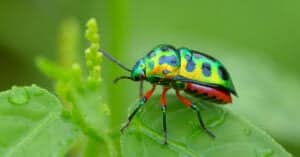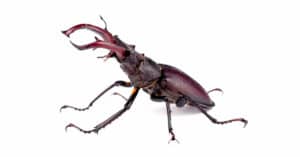There are about 97,000 weevil species known throughout the world. This small insect is a beetle with an elongated snout that can fly – unlike other types of beetles that cannot.
Given their large numbers and variety, you might ask yourself what these tiny creatures eat. Considering they’ve been around since the Middle Jurassic period, weevils might have quite a diverse diet, right?
Well, if you have questions regarding the beetle diet, specifically the weevil diet, this article has all the answers!
What Are Weevils?
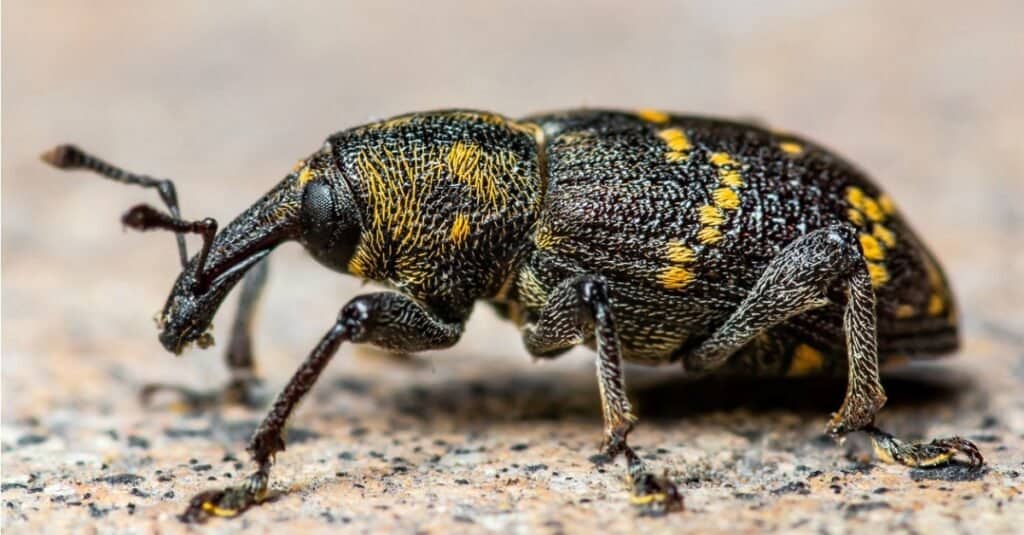
Weevils are beetles part of the
Curculionidaefamily.
©iStock.com/nechaev-kon
Weevils are beetles part of the Curculionidae family. They are characterized by an elongated snout and a rather small size – up to about ¼ inches long. The many species of weevils are herbivorous – since their diet also consists of grains, weevils are often regarded as pests.
The weevil’s elongated snout is called a rostrum and shelters the animal’s chewing mouthparts. Unlike other insects of the same size, weevils do not have piercing mouthparts.
The weevil superfamily consists of nine families, out of which two are extinct. The weevils in the extant families are known as fungus, leaf rolling, primitive, straight snout, true, and pine flower weevils.
What Do Weevils Eat?
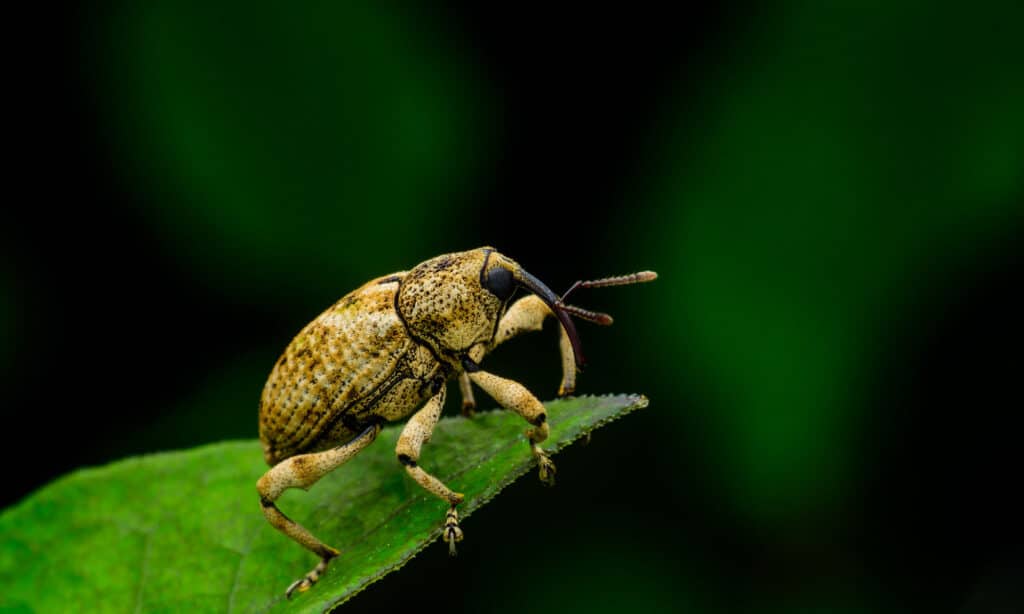
Weevils eat plant parts, flour, and grains.
©Samuel Lam/Shutterstock.com
Weevils are generally considered herbivores. Their diet varies depending on the species. Weevils eat plant parts, flour, and grains. For example, certain weevils go for particular plants and may avoid grains entirely. Other species enjoy a diet rich in fruits and nuts – such weevils are appropriately called nut, fruit, and acorn weevils.
Most weevil species, such as maize, granary, and rice weevils, eat grains and seeds stored in dry areas. The diet of these weevils consists mainly of rice, flour, cereals, and, in some cases, even pasta.
Ultimately, to say that weevils are just herbivorous could be an understatement. Given the high number of weevil types and species, they virtually eat any plant. Strawberry roots and evergreen plants are not safe with them nearby either.
Weevils are commonly known around the household as they often get in pantries and any other places where you keep your dry food.
A List of Foods Weevils Eat
It would be quite difficult to comprise a complete list of what weevils eat. As such, we decided to mention the most-eaten foods by these creatures.
- Fruits
- Nuts
- Buds
- Flowers
- Grain
- Flour
- Rice
- Pasta
- Plant parts
- Cereal
What Do Baby Weevils Eat?
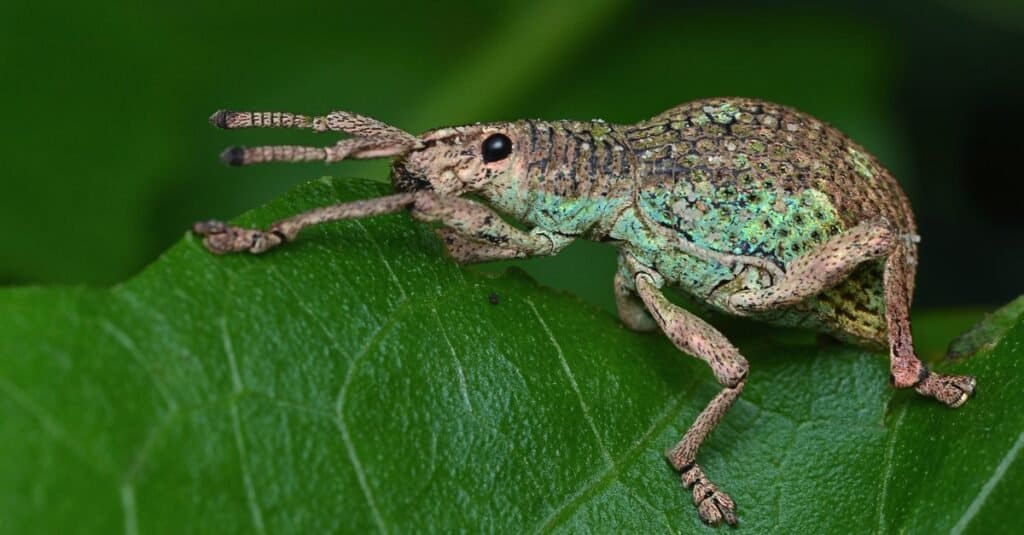
Baby weevils eat host plants nearby.
©Leong9655/Shutterstock.com
Baby weevils get first-hand experience when it comes to the weevil diet. Depending on the type and species, female weevils may lay their eggs in the soil, around a host plant, in rolled-up leaves, or in the food item they are currently consuming, such as grain kernels. In the latter case, the mother weevil seals the kernel and leaves the eggs behind.
When baby weevils hatch from the eggs planted in the soil, they’ll eat the host plant nearby or feed on the grain or seed itself. More specifically, they will use their elongated noses to suck up all the nutrients, vitamins, and minerals from it.
When baby weevils hatch from eggs planted in seeds or kernels, they remain inside the food item and consume it until they’re fully grown.
How Do You Get Rid of Weevils in Your Household?
While they can roam free in the wild, and farmers have ways of disposing of these little pests, household weevils can be quite a nuisance. Weevils have more than enough resources to break through containers and get into your favorite foods, such as rice, pasta, and cereals.
One quick way to prevent any weevils from getting into your household starts by inspecting your pantry. Remove any weevil-affected items and then prepare for a full pantry cleanup. Before placing everything back, wipe the shelves and large containers with hot water and soap (disinfecting spray works, too). Lastly, wipe them again with a cloth soaked in white vinegar, as it can kill weevils.
Using vinegar is only one effective way to kill weevils. You can also grab a fresh batch of bay leaves, cloves, and garlic, and place them in and around your pantry. All of the aforementioned are natural weevil repellents.
Should You Throw Out Weevil-Infested Products?
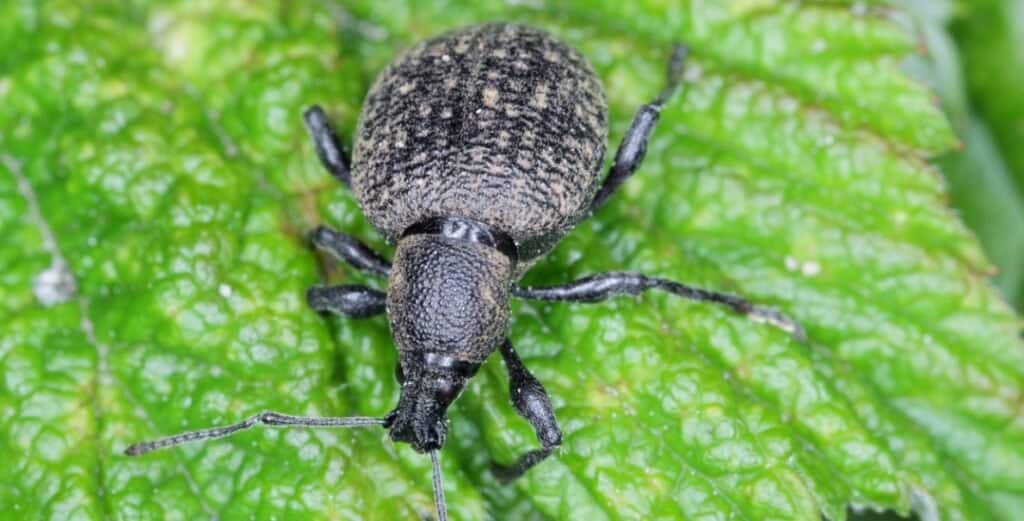
It is highly recommended to discard any product, bag, or container that was infested by weevils.
©iStock.com/Tomasz Klejdysz
Discarding any product, bag, or container – especially the product within them that was infested by weevils – is highly recommended. Even though they aren’t associated with any diseases, keeping the infested products will only lead to further infestation. Although they aren’t harmful, picking weevils out and consuming the infested products is not recommended, as with any other type of bug infestation.
Are Weevils Harmful to Humans?
Even though discarding food items infested by weevils is recommended, accidentally eating one or two won’t have dramatic consequences. The same applies to pets – nothing will happen to your cat if it stumbles upon a weevil and consumes it.
Naturally, eating a weevil is most likely accompanied by an unpleasant taste and probably a crunchier consistency.
Up Next:
The photo featured at the top of this post is © Leong9655/Shutterstock.com
Sources
- Aptive, Available here: https://www.goaptive.com/blog/pest-facts/get-rid-of-pantry-weevils
- The Spruce, Available here: https://www.thespruce.com/what-is-a-weevil-2656439
- Terminix, Available here: https://www.terminix.com/other/weevils/diet/
- Nature Talks and Walks, Available here: https://www.naturetalksandwalks.co.uk/what-do-weevils-eat/
Thank you for reading! Have some feedback for us? Contact the AZ Animals editorial team.




